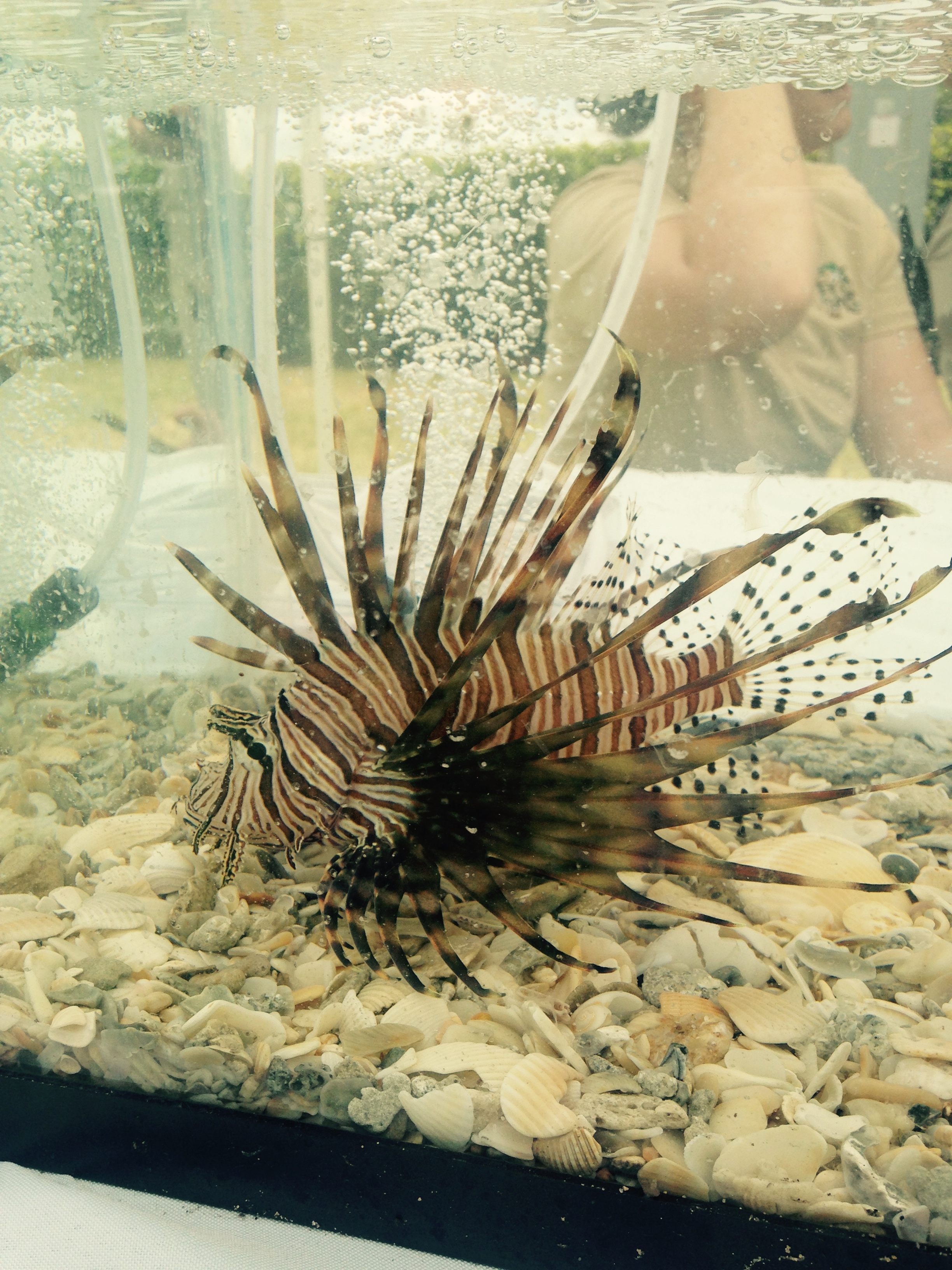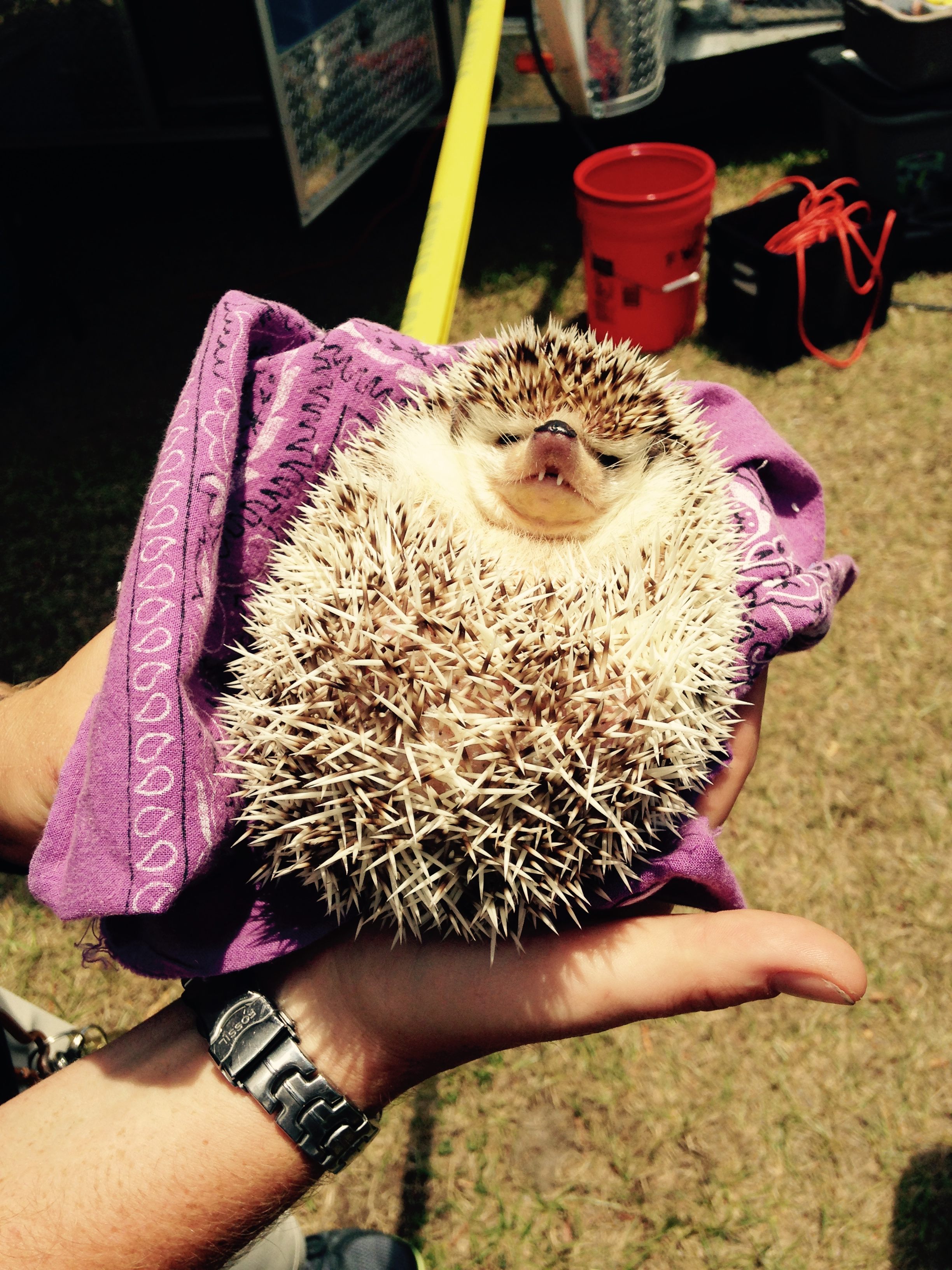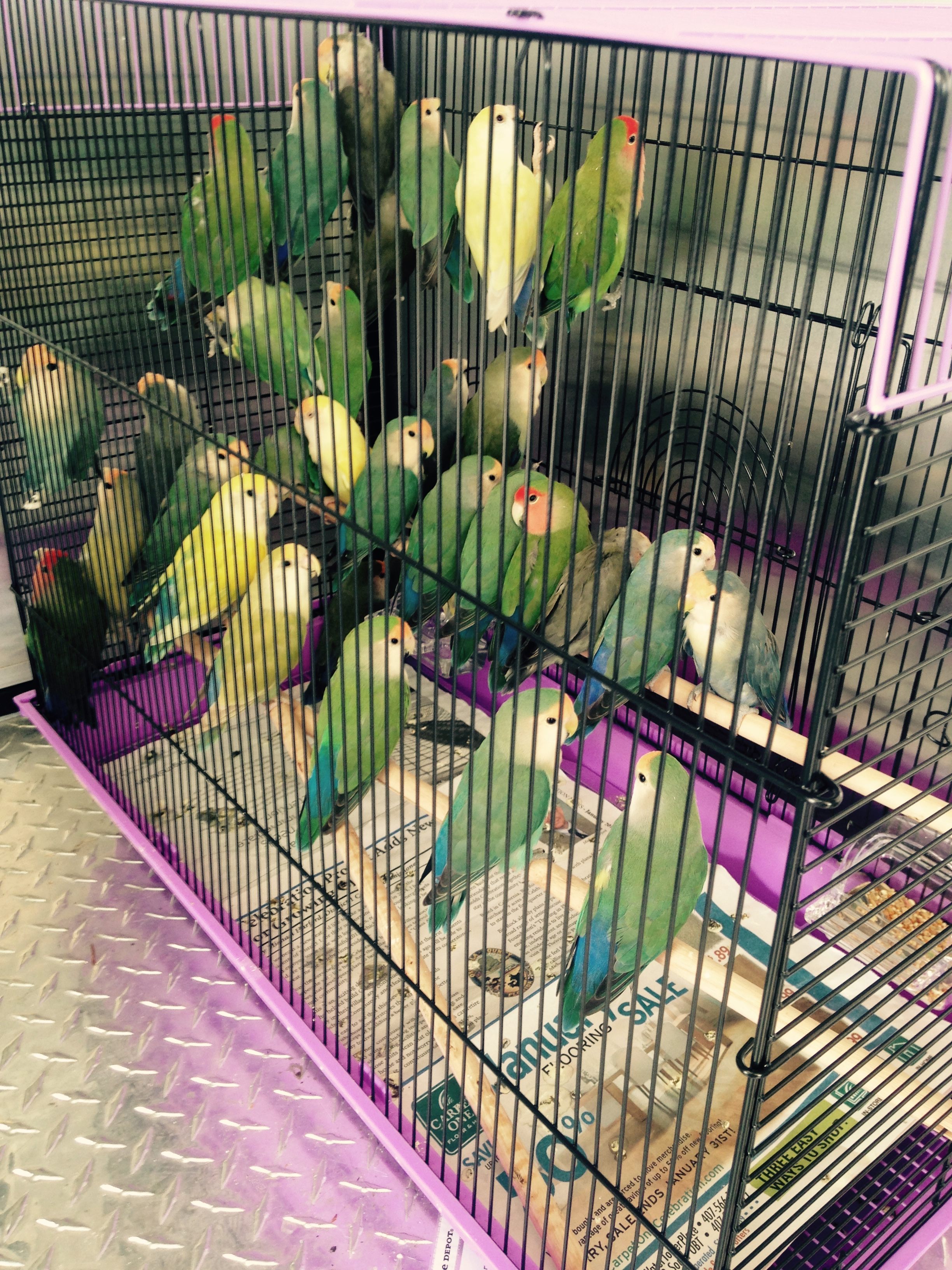How to Get Rid of Your Exotic Pet, No Questions Asked

Scenes from an exotic pet amnesty in Florida. (All photos: Oliver Lee)
Hypothetical question: If you acquire a baby Burmese python and realize, too late, that it can grow up to 20 feet in length and can’t be contained by an aquarium, what do you do?
The answer, for Floridians at least, is Exotic Pet Amnesty Day.
This is the first event in Kissimmee, about a half hour’s drive south of Orlando; there are a number of tents set up on a grassy field outside the convention center in Osceola Heritage Park. The main tent, where the owners go to surrender their pets, is roped off with yellow caution tape and populated with veterinarians and volunteers for the state’s Fish and Wildlife Conservation Commission, which hosts the event.
“The purpose of the program is to give exotic pet owners an option to surrender their pets,” says Cody Miller, Invasive Species Coordinator for the Nature Conservancy. “Pets that they can’t take care of, or have grown too large, and give them a way to surrender them that is safe and an alternative to dropping them in the wild.”
While there’s no strict definition of an exotic pet, the FWC defines it as any pet that isn’t domesticated—no cats or dogs. The sheer variety of animals available online is astonishing: a quick search turns up owners and private breeders selling zebras, capuchin monkeys, kangaroos, even a baby camel. And while most states now require permits or licenses of some kind for these rarities, enforcement is difficult, and many owners eschew them; it’s why, in part, the amnesty program doesn’t penalize owners for surrendering their pets and has a no-questions-asked policy.

One of two Burmese pythons that were turned in.
Since the program began in 2006 they have received over 2000 animals, many of which are then taken in by pre-approved, experienced adopters. Though Florida continues to be ground zero for exotic pets—one volunteer called Miami the “Mecca” for the issue—it’s not the only one with the problem. On the Born Free USA website, which catalogues exotic pet incidents, there are over 2000 incidents recorded across the country. Last month, an unlicensed pet zebra bit off part of a man’s nipple in Oklahoma; just this week, an emu was caught running loose on a Georgia highway, causing traffic jams. And those are just the ones that were caught.
“You don’t have to let them loose,” says Miller. “A lot of times domesticated animals are not going to survive in the wild. They’re used to being fed. They’re not used to hunting. They don’t have that natural instinct. They’re going to get killed very quickly. So this is a very good solution.”
The other, and perhaps more pressing, issue is what happens when released pets thrive and become invasive. Approximately 26% of all fish, reptiles, birds, and mammals in South Florida are exotic—more than in any other part of the United States—and it’s costing the state more than $500 million a year to control the population. The Burmese python, in particular, has almost single-handedly decimated much of the native wildlife in the Everglades, causing alarming changes to the ecosystem.

The lionfish, an invasive species.
Next door to the adoption area is a tent featuring the lionfish, which in recent years has overtaken coral reefs and other shallow water areas around the state. Originally from the Pacific, it comes over in the ballast water of ships or through the pet trade, and by laying about 30,000 eggs at a time with no natural predators, it is quickly becoming dominant. There is a brochure at the table encouraging locals to catch them—the caption, underneath a photo of a snorkling, harpoon-wielding diver, reads “Be the Predator!”—and includes helpful tips on how to fillet the spiky and, apparently, delicious species.
At this point, a woman brings in a sickly-looking dog, balding in patches with long, uneven wisps of hair. Everyone watches as she wanders from tent to tent, carrying the dog in her arms.
“Is she trying to surrender that dog?” asks one of the volunteers, rhetorically. “ We’re not taking cats and dogs. But we do have someone from animal services.” A moment later, she seems to change her mind. “I’m going to adopt that dog. I can’t stand seeing animals helpless.”

A nocturnal hedgehog naps through being turned in.
The question of why people desire exotic animals is a bit complicated. As psychologist Lauren Slater, who spoke with Adam Roberts of Born Free USA, writes in National Geographic, exotic pet owners tend to fall into a few different categories. Some see their pets as surrogate children; others as status symbols. There are the impulse buyers, the collectors, and of course, those who simply love wild animals, often starting out as volunteers at organizations such as these.
Many of these types, it seems, are represented here today. A hedgehog, turned in early this morning, is a common impulse purchase; most owners don’t know that they’re nocturnal, and not an ideal pet for children. Behind the adoption tent are cages of various colorful birds, including one that contains more than twenty sleepy-looking conure parrots, all from the same owner. A silver fox, surrendered earlier in the day, has already been adopted by Charles and Kim Titterington, the husband and wife team behind Swamp Girl Adventures, a local non-profit that assists in the rehabilitation of animals and has a tent set up here. The fox is already in the back of their SUV—it smells strongly of skunk—and will join their wolf hybrid back at home.
“These are wild animals,” says Mr. Titterington. “They’re not pets.”

A silver fox about to get a new home.
The Burmese pythons, of course, are the stars of the show. By mid-day, there’s been just one albino Burmese surrendered; when it arrives there’s a small rush as parents and children gather around. About an hour later, another arrives—this one fully-grown, with the trademark black and brown skin pattern—and the swarm of people forms again, their camera’s whirring-clicks capturing the team of veterinarians measuring and weighing the python as volunteers firmly steer away those who try to get too close to action. It’s suddenly clear why the caution tape is needed.
As devastating as the Burmese python has been for Florida’s ecosystem, it’s worth noting that invasive species come in all sizes, and are often spread by those who are unaware. “Invasive species are a national issue,” says Eleanor Foerste of the Fish and Wildlife Conservation Commission, one of the organizers of the event. “Every time someone moves they can be bringing gypsy moths from one car into another state. Then moths fly away and lay eggs, and we’ve moved the problem. It comes in at our borders but it crosses borders.”
It’s now early afternoon, and there’s a brief lull as the trickle of pet owners dies down and gives way to potential adopters. Just before the 2 p.m. deadline, a woman arrives with a kinkajou wrapped around her neck — it resembles a monkey but is more closely related to the raccoon — and hands it one of the volunteers, who, as a crowd gathers around him, takes into his arms and holds it against his chest like a child.

Kinkajou petting zoo

Peach-faced lovebirds after being surrendered.















Follow us on Twitter to get the latest on the world's hidden wonders.
Like us on Facebook to get the latest on the world's hidden wonders.
Follow us on Twitter Like us on Facebook